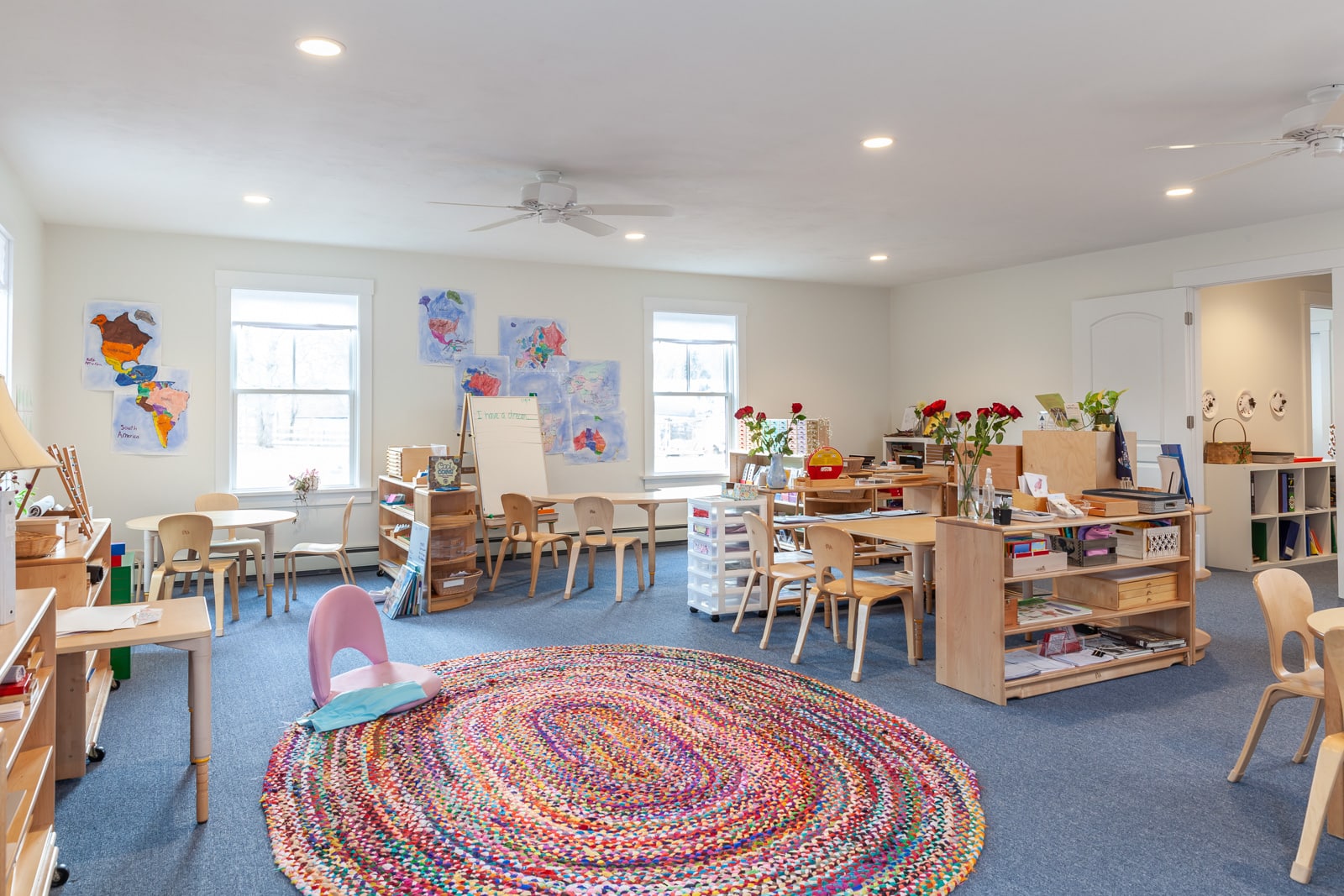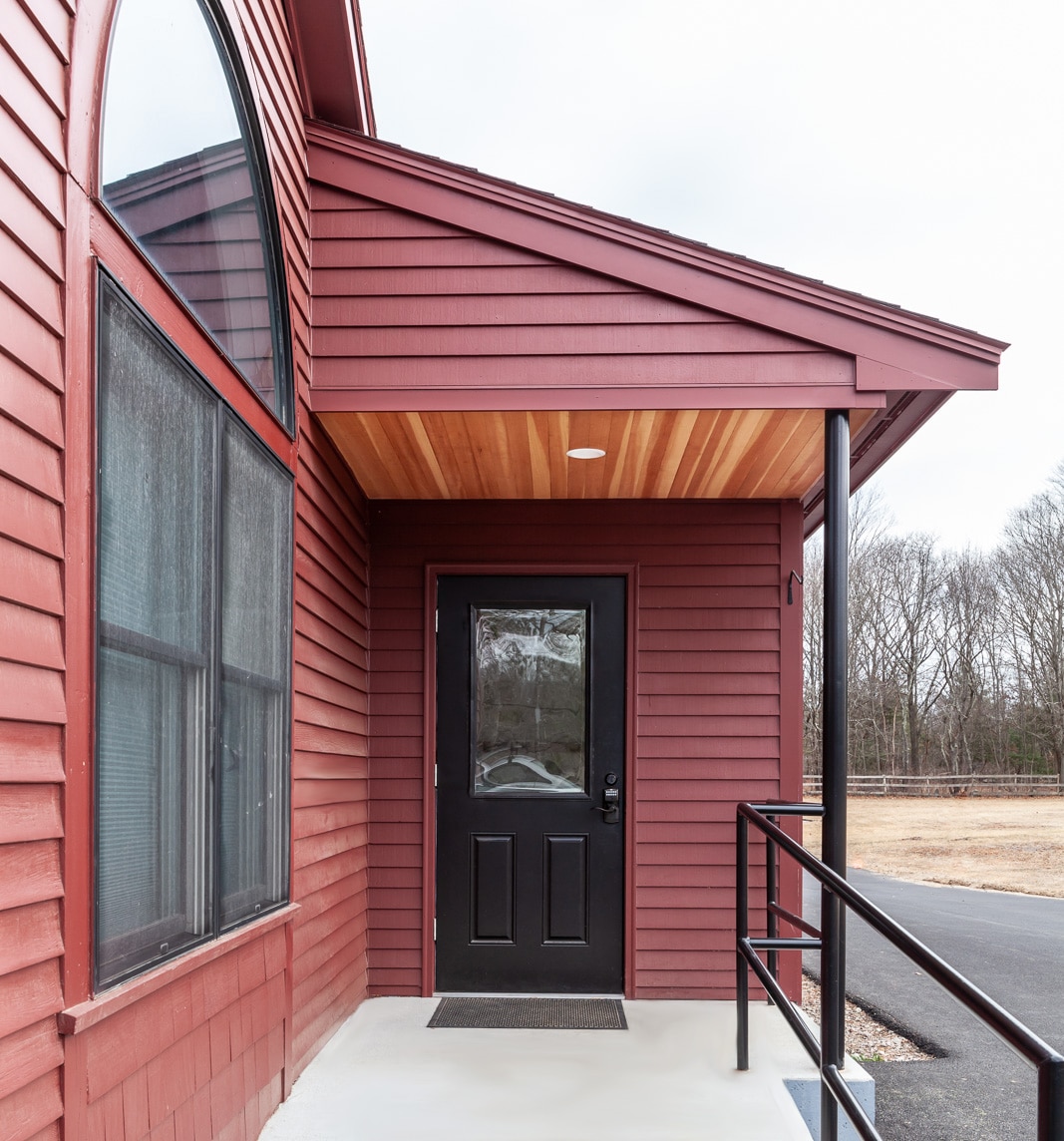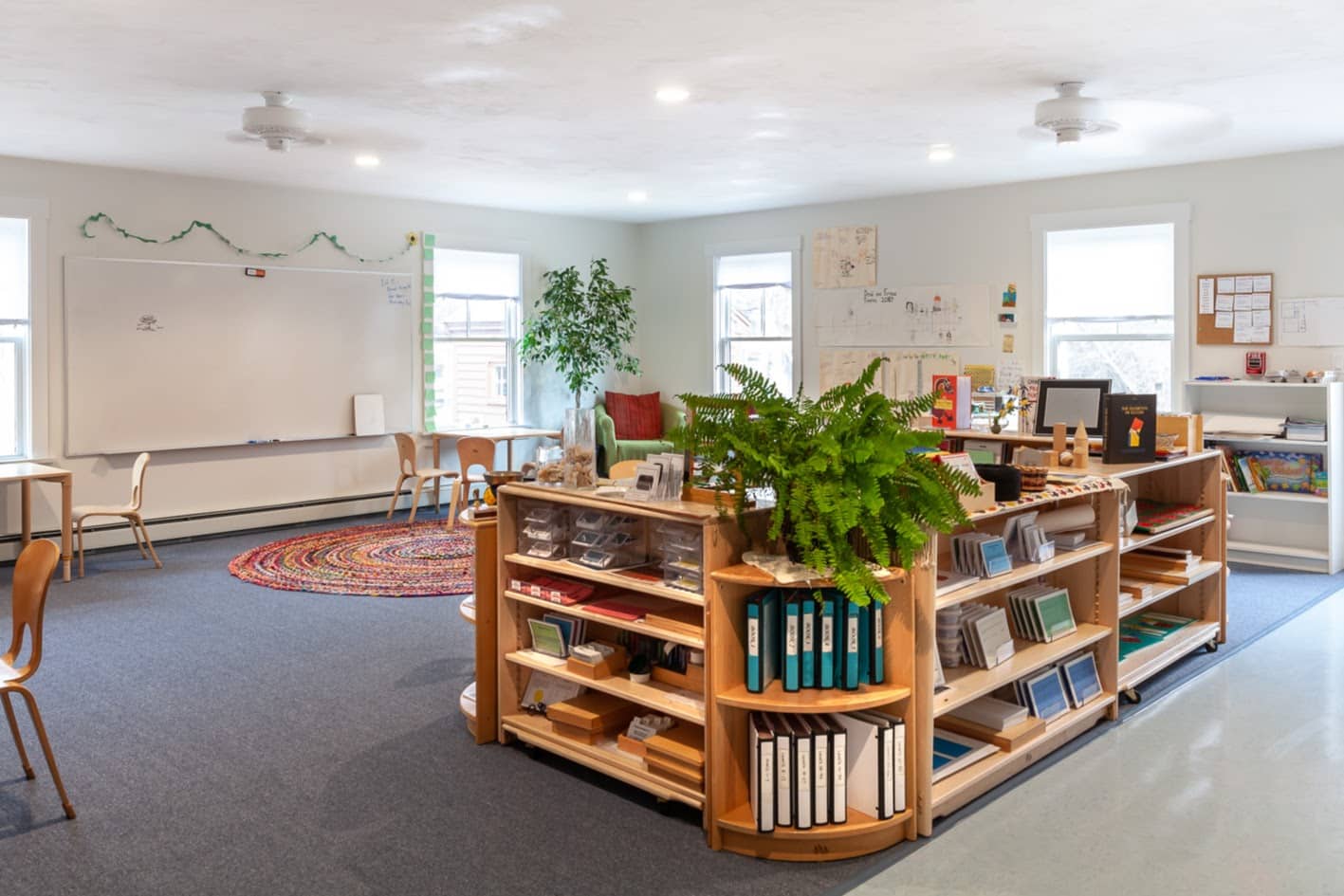Creating Healthy Learning Spaces: Designing Schools for Health and Well-Being

North Shore Montessori School Interior Design by Pionarch | Image Credit: Marshall Dackert Photography
It is no secret that physical environment can play a major role in determining the mental and academic success of students. Studies have demonstrated that the design and arrangement of educational spaces can have a significant impact on students’ behavior, mood, and learning capabilities. School systems that have adopted the Montessori philosophy of learning, encourage students to take ownership of their education through self-directed study and personalized instruction.
Designing a school that promote student health and learning requires careful consideration of essential elements such as the educational approach, physical design, materials and resources, and overall atmosphere. It is possible to establish an atmosphere that is suitable for learning and supports the wellbeing of students. Some of the components to think about include:
Biophilic Design
To enhance the well-being of students in schools, it is crucial to incorporate natural elements such as indoor plants, green walls, and natural materials. By integrating features like expansive windows, skylights, and open spaces, we not only increase natural light and ventilation but also establish a strong connection with the outdoor environment. When we provide accessible gardens and outdoor learning spaces, we create opportunities for physical activity and encourage students to connect with nature. This fosters a sense of tranquility and well-being, significantly enhancing the learning experience for both students and teachers. These design elements have the power to uplift mood and improve mental health and concentration.
Color Scheme
Choosing the right colors for schools can affect the mood and effectiveness of students and teachers. Soothing colors like blues and greens can promote calmness, while brighter colors like yellows and oranges can boost energy and creativity. Consider the emotional and psychological effects of colors when designing educational facilities for a productive learning environment.

North Shore Montessori School Exterior Design by Pionarch | Image Credit: Marshall Dackert Photography
Open and Flexible Spaces
Creating adaptable and multifunctional spaces that can accommodate different activities and promote collaboration is an effective way to enhance the learning experience. Designing classrooms with modular walls, flexible furniture, and layouts can encourage group work, discussions, and hands-on learning. By providing students with a space that can be easily adapted to their needs, they will be able to engage in a variety of activities and work together to achieve their learning goals. This approach can promote creativity, critical thinking, and problem-solving skills.
Space for Reflection and Organization
With decorations kept to a minimum, classroom walls usually have practical and simple designs that are not overly distracting. Cluttered environments can affect the daily tasks of students and teachers, as well as potentially impact mental health. The approach of this philosophy promotes self-directed learning and avoids overstimulation. Calm-down spaces are designed to provide safety and comfort, aiding in the regulation of student emotions. Adding reflection spaces improves students’ behaviors and increases student happiness.
Health & Fitness Facilities
Creating dedicated relaxation and mindfulness spaces, such as quiet rooms or meditation areas, is an essential part of prioritizing mental health. These areas can assist students in managing stress and strengthening their emotional wellness, leading to improved interaction between students and educators. Furthermore, it is important to incorporate locations that provide access to gymnasiums, sports fields, or outdoor activities that encourage a healthy lifestyle.
Outdoor Learning Spaces
Creating outdoor spaces for learning and recreation, such as gardens, playgrounds, or outdoor classrooms, is incredibly beneficial for students. Recent studies have shown their value in encouraging high-quality learning and teaching, supporting critical thinking, and providing hands-on experiences with nature. These areas help our students thrive academically and personally while fostering an appreciation for the natural world.

North Shore Montessori School Interior Design by Pionarch | Image Credit: Marshall Dackert Photography
Integrating Technology
Technology can improve modern learning experiences in classrooms as well as help to build fundamental skills to prepare for independent learning. Including online classrooms, interactive displays, and multimedia stations within the curriculum can promote creativity and critical thinking. This helps to connect beyond the classroom and create a virtual connection crosses institutions, cities, and communities.
Creating Community Spaces
Designing spaces with a sense of community in mind is of utmost importance. Social interaction is greatly encouraged when offering collaborative spaces such as common areas, and celebration spaces. Here, teachers and students have the chance to gather and recognize accomplishments while also getting to know one another better. What’s more, these spaces allow teachers to guide students toward building an inclusive sense of community.
School design that takes into account the overall student experience helps prepare students with the tools for a future of healthy living and working. Incorporating nature, promoting physical activity, thoughtfully integrating technology, and prioritizing mental health are essential elements in creating ideal educational spaces. By embracing these design principles, schools can develop learning environments that not only nurture students’ successes but also empower them with the skills for a positive future, ultimately leading to happier and more fulfilled lives.
